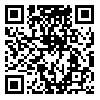BibTeX | RIS | EndNote | Medlars | ProCite | Reference Manager | RefWorks
Send citation to:
URL: http://irj.uswr.ac.ir/article-1-372-en.html
2- Pediatric Neurorehabilitation Research Center, University of Social Welfare & Rehabilitation Sciences(USWR), Tehan, Iran.
3- Psychology and Education of Exceptional Children,Tehran University, Tehran, Iran.
Objectives: Inclusive education is a process of enabling all children to learn and participate effectively within mainstream school systems. It does not segregate children who have different abilities or needs. This article explores the attitudes of regular and itinerant teachers about inclusion of hearing impairment children in their schools in general education.
Methods: In a descriptive Survey research design, the sample included 100 teachers (50 regular and 50 itinerant) who were selected randomly, according to a multistage sampling method. Data was collected by using questionnaire with 32 questions regarding their attitudes. One-way Analysis of Variance and t-test were performed to obtain between- group comparisons.
Results: The results indicated that the teacher's positive attitudes towards inclusive educational system of students with hearing impairment. Significant difference in attitudes was observed, based on the teaching experience, gender, level of teaching. The results also indicate that most teachers are agreeable to the inclusion of students with hearing impairment in their classrooms.
Discussion: successful inclusion for hearing impairment children in regular classrooms entails the positive attitudes of Regular and itinerant teachers through a systematic programming within the classroom.
Received: 2014/09/12 | Accepted: 2014/10/17 | Published: 2014/12/1
| Rights and permissions | |
 |
This work is licensed under a Creative Commons Attribution-NonCommercial 4.0 International License. |





